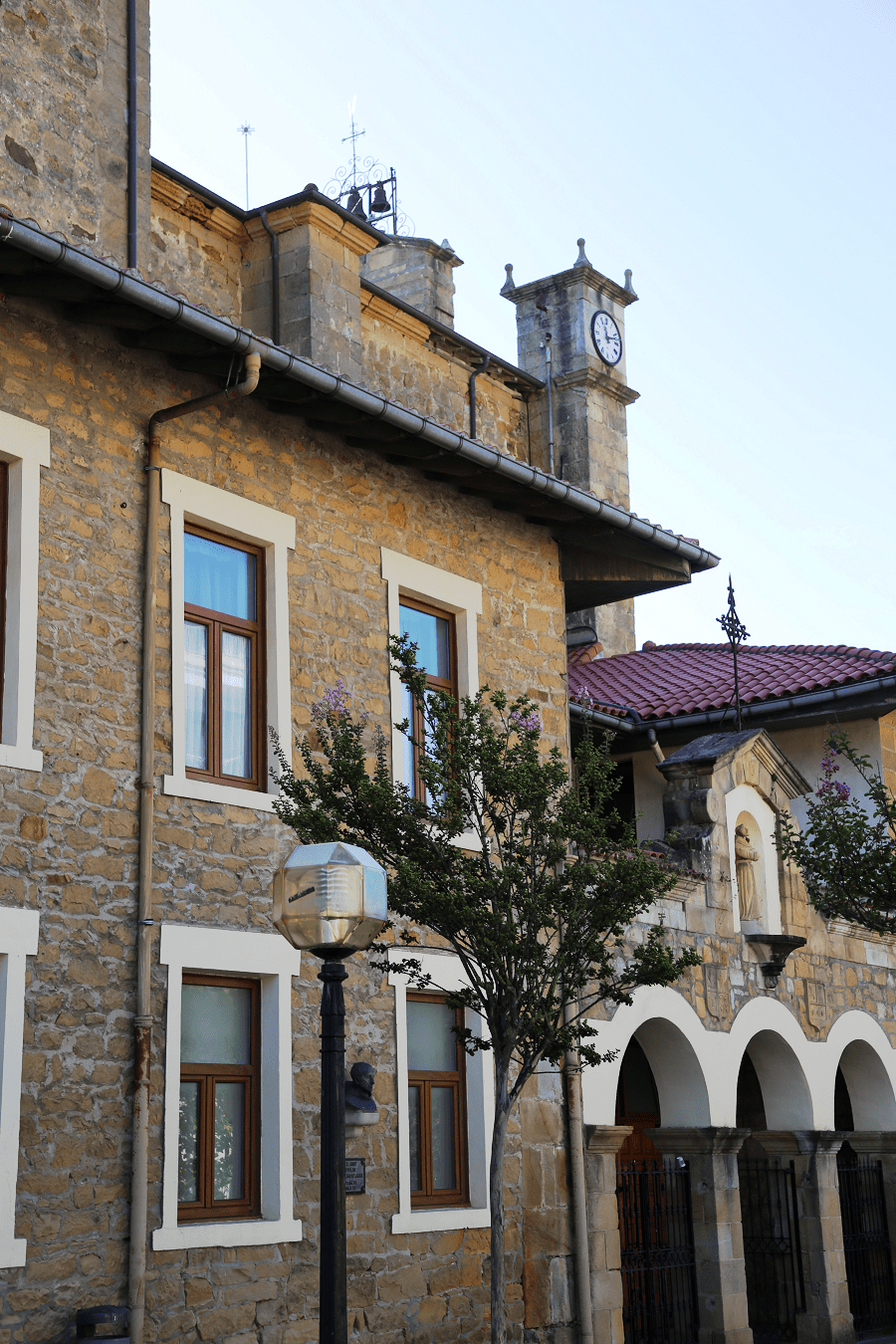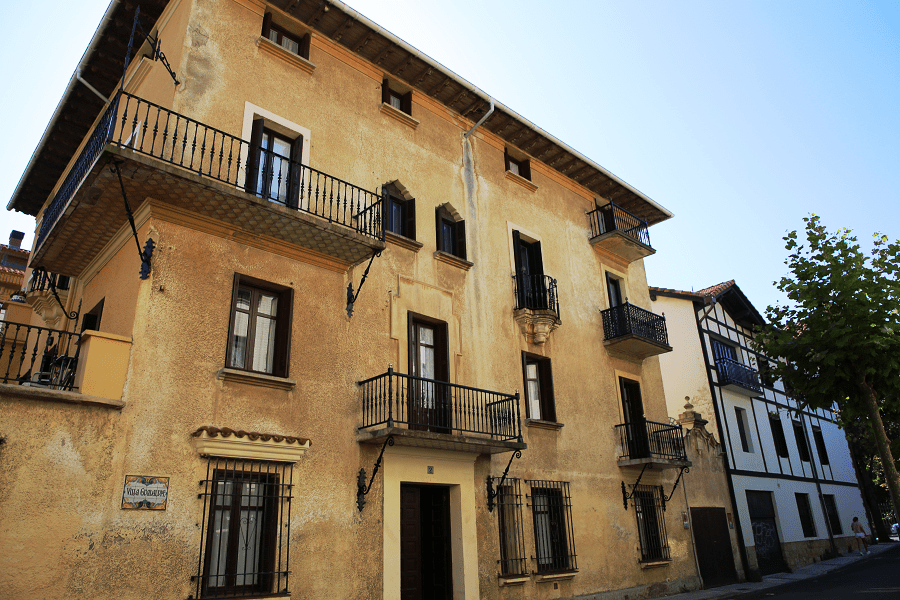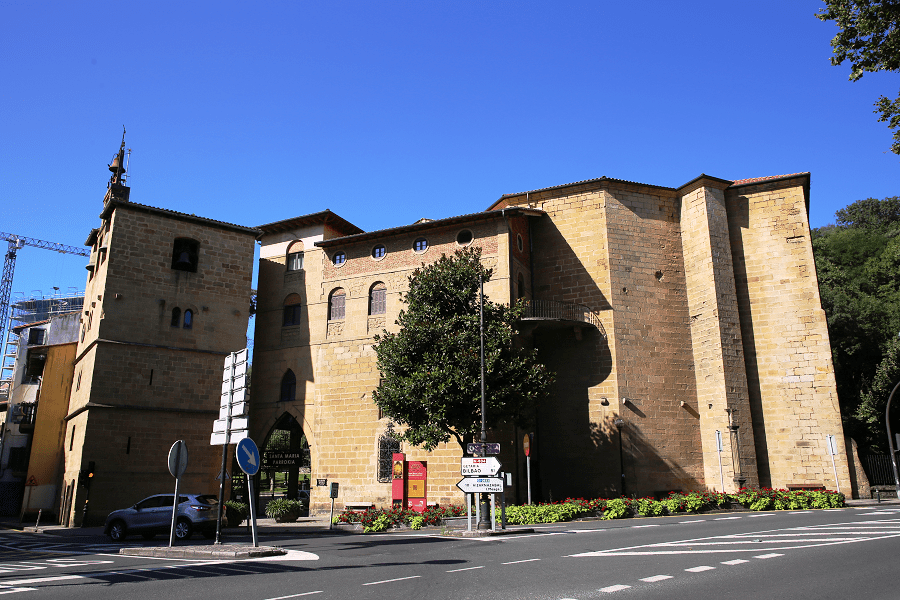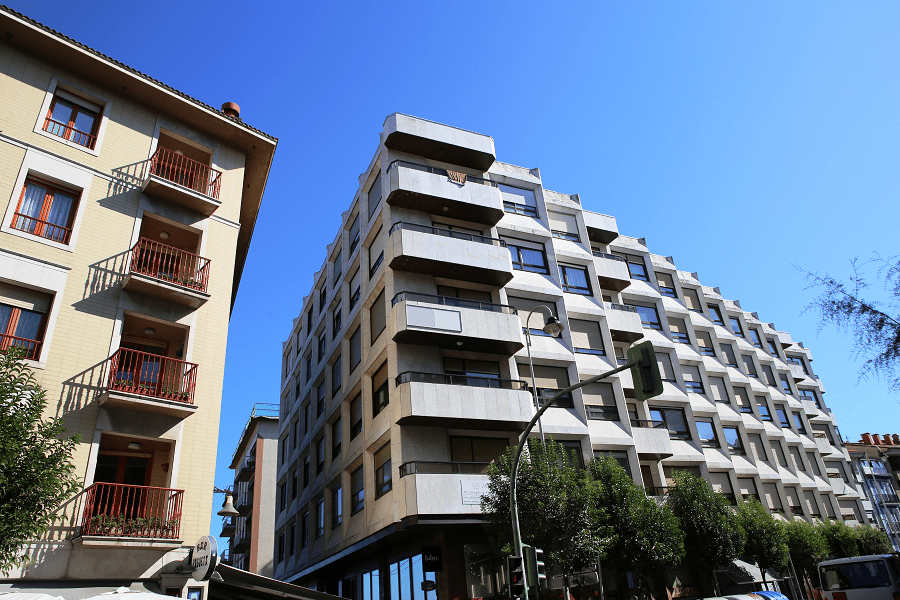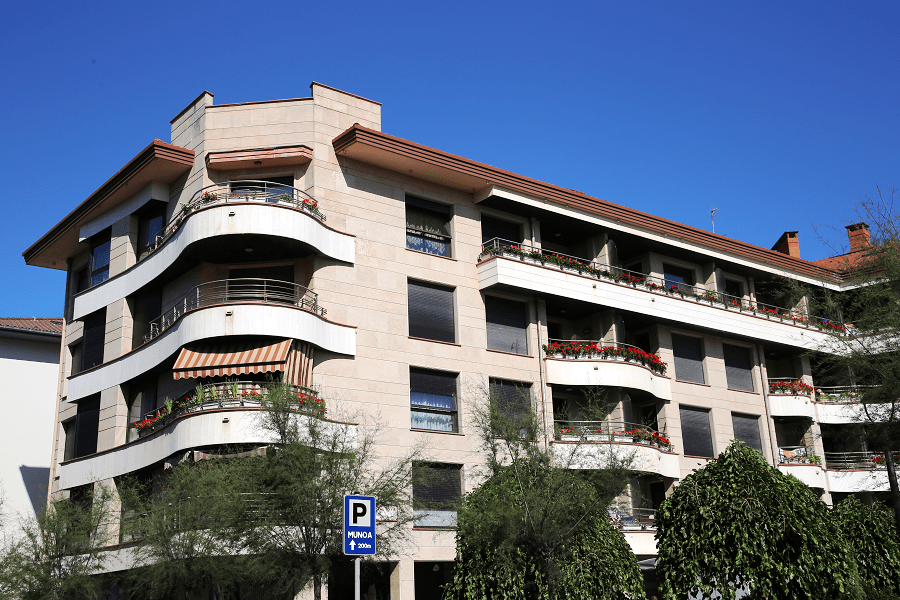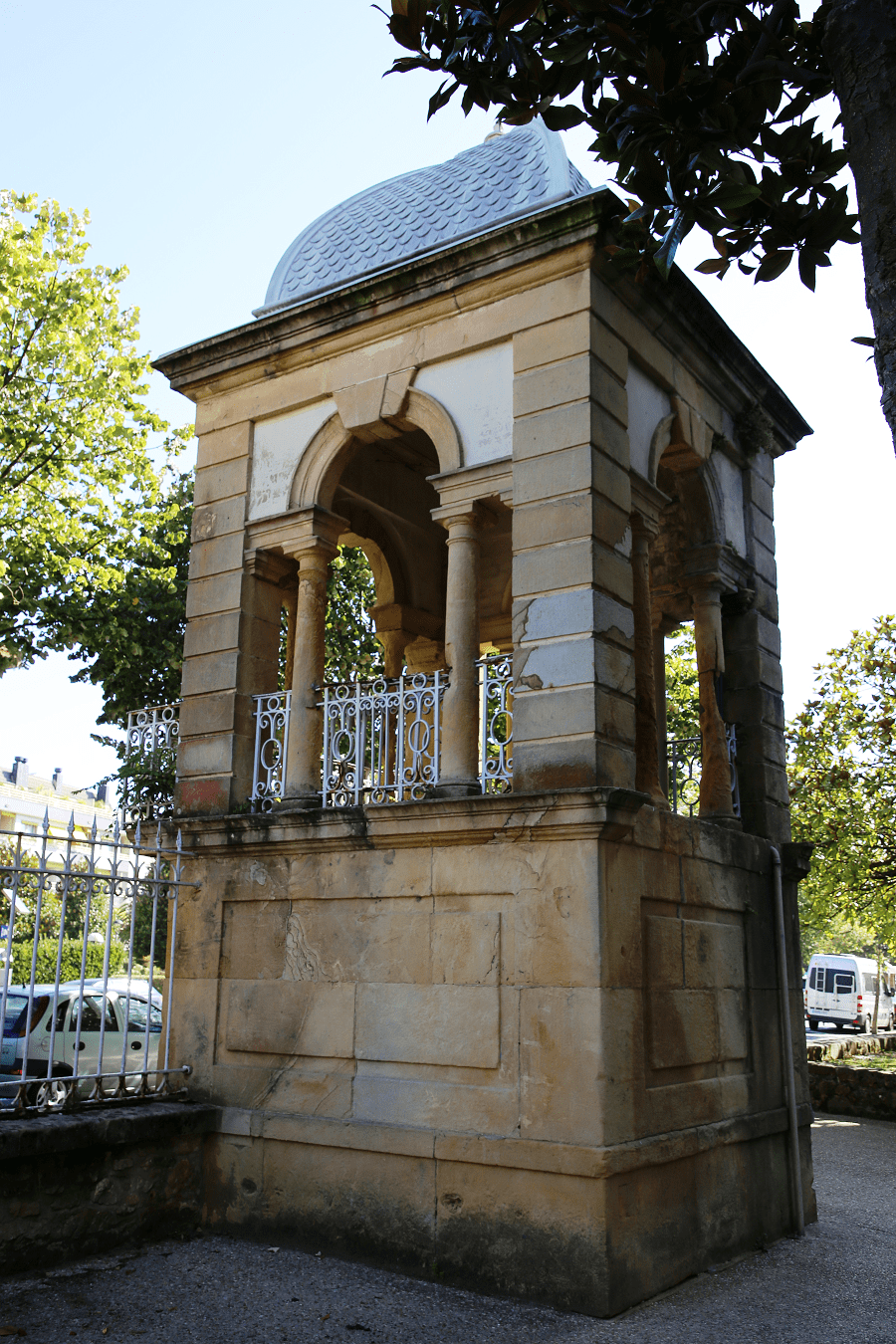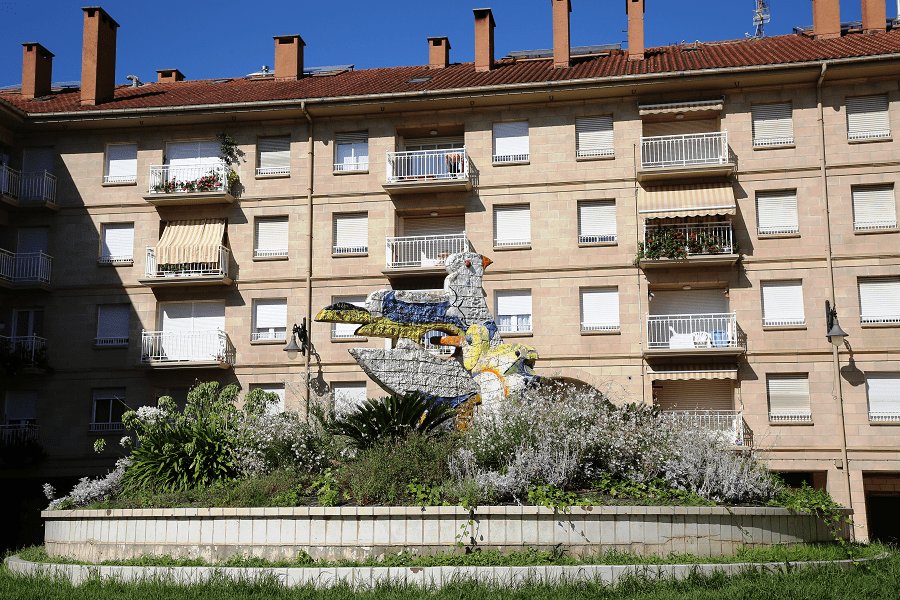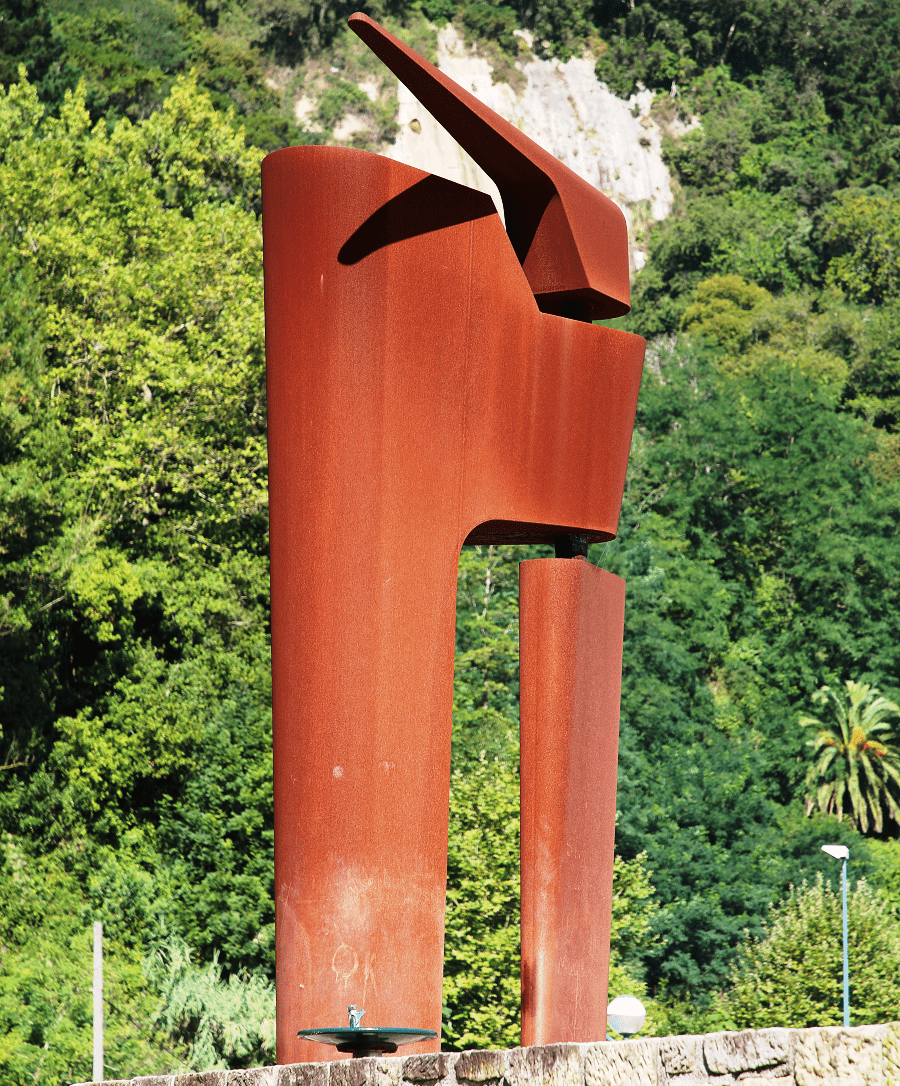Zarautz (Spanish: Zarauz) is a coastal town and a municipality located in central Gipuzkoa, Basque Country, in Spain. It borders Getaria to the west.
A popular part of the Costa Vasca (Basque Coast) of the Atlantic resorts of Spain.
Tourism and main attractions
Civil architecture
The urban center of the city stands out for the presence of stone shields on various facades, for example those on Azara streets number 2 and 17 (Casa Gamboa, from the 17th century) or Zigordia. Among all the buildings in the old town, the Palacio de Narros, the Casa Portu (current town hall), the Torre Luzea, or Casa Makatza, a defensive building from the 15th century, stand out.
The Narros Palace, built in 1536 and surrounded by a large English garden, also has a coat of arms on its central façade. It was the residence of Isabel II. It is a Mediterranean-style renaissance building, inside which the 19th-century decoration is still preserved, such as various pieces of furniture, the great archive, the library, and the supposedly haunted blue room.
In Calle Mayor, you will find the Torre Luzea (“Long Tower” literally), a 15th-century military Gothic castle. It has three floors and is a class work that has endured numerous wars.
Casa Portu is a good example of the Basque palaces of the 16th century. It has four Ionic columns on its façade and was built by Juan Ortiz de Zarauz, who also promoted the construction of the Dotorekua house, the current headquarters of the Caja Laboral.
The Makatza House is a defensive building from the 15th century; It currently houses the offices of a bank.
Religious architecture
The convent of the Franciscan Fathers was founded by Juan de Mancisidor, secretary of Philip III in 1610. It has one of the most interesting archives in Zarautz, despite the looting it has suffered, such as the one in 1794 by French troops.
In addition, the convent has several panels from Flanders from the 16th century.
The hermitages of San Pelayo (patron saint of Zarauz) (the original building, from the 16th century, was demolished; the current building was built in 1850 thanks to a donation from the Marquis of Narros), San Sebastián in the neighborhood of Urteta (between the 14th and XV), those of San Martín de Ibaieta and San Pedro de Elcano, both built in the 16th century, or the Ermita de Santa Marina (built in 1610 and rebuilt in 1932 and 1991) located on the street of the same name in the town center, are the most prominent.
In addition, that of Santa Bárbara, built in 1704 and renovated in 1995, has an interesting oil painting of the saint inside.
Museums
There are two museums in Zarautz, the Photomuseum and the Art and History Museum of Zarautz. In “Dorre Luzea” there are frequent art exhibitions. The town also has many other picture galleries.
Beaches
Zarauz beach is the largest in the Basque Country and one of the longest in the Bay of Biscay (2.8 km); for this reason it is known by the nickname “The Queen of the Beaches”.
Cuisine
As it is tradition in the Basque Country, gastronomy is a very important part of Zarautz. Many restaurants can be found in Zarautz, offering traditional as well as modern fine cuisine. Zarautz is home town of one of the most famous cooks in Spain, Karlos Arguiñano, whose hotel and restaurant can be found right in front of the beach.
How to get to?
From Vitoria-Gasteiz 1 hr 6 min (84.1 km) via AP-1
From Donostia-San Sebastián 29 min (25.2 km) via AP-8
From Madrid 4 hr 24 min (440 km) via A-1 and AP-1
Main information
Area: 14 km²
Coordinates: : 43°17′11″N 2°10′29″W
Population: 23 271
Languages: Spanish, Basque
Currency: Euro
Visa: Schengen
Time: Central European UTC +1
See here best sea and ocean resorts of France and Spain (223 objects)





